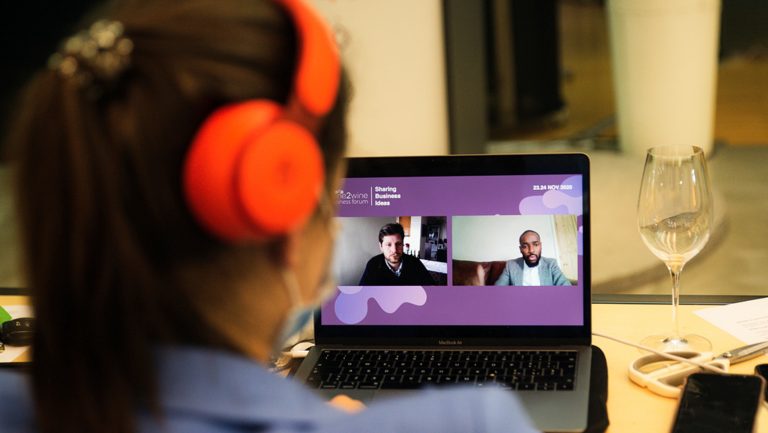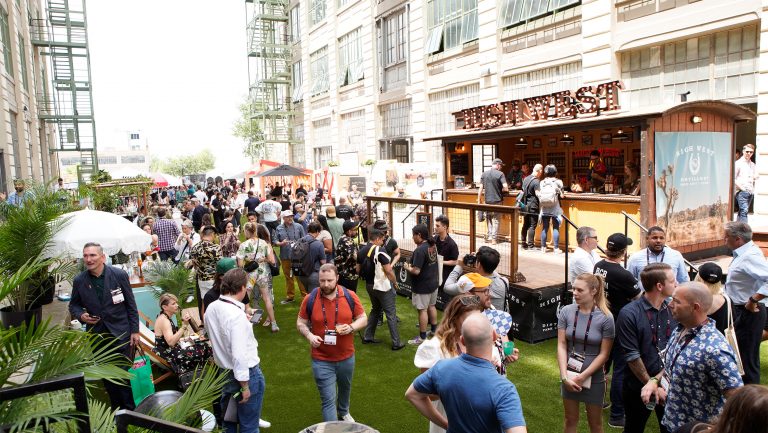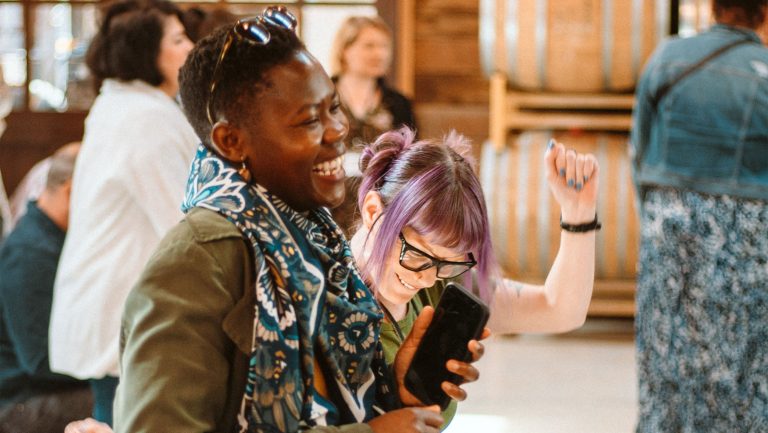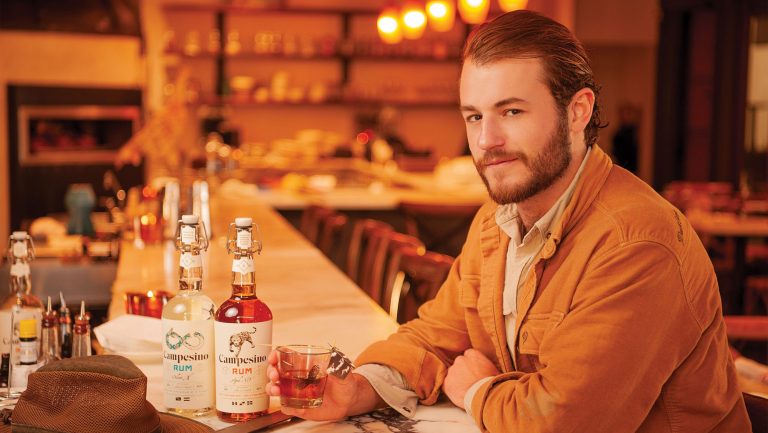In a post-pandemic world, the wine industry will need to look very differently than it does right now, and the 2020 digital edition of the wine2wine Business Forum, presented in collaboration with the wine2wine Exhibition, boldly reimagined this future.
Dubbed “Focus 2020,” the event, streamed on November 23 and 24, addressed how entrepreneurs can tap into new revenue sources and better engage with consumers through a number of presentations spanning sustainability, education, and digital marketing. A major theme throughout the forum was inclusivity, with actionable takeaways on how businesses can become more diverse.
How Inclusivity Can Grow Wine’s Consumer Base
As wine continues to lose market share, it’s not the time for the industry to chase trends, said Magnavai Janjo, sales director at UK importer MJ Wine Cellars, in a session about the benefits of a more diverse industry. Instead, he suggested companies take a top-down approach and find ways for their products to reach underserved markets. “Diversity is not a charity, it’s more about empathy,” he added.

Don’t miss the latest drinks industry news and insights. Sign up for our award-winning newsletters and get insider intel, resources, and trends delivered to your inbox every week.
Unlike spirits ads, which are more likely to feature females and ethnic minorities in an energetic setting, and therefore invite potential consumers to see themselves in such an attractive scenario, the typical wine advertisement, Janjo added, stars a tone-deaf middle-aged white male winemaker swirling a glass in a vineyard. Without outside pressure, he said, “There is no incentive to change anything.”
Change is what Jermaine Stone, founder of Cru Luv Selections in Brooklyn, also wants to see. In a session about wine and hip-hop, Stone highlighted the music style’s global and influential appeal. “Wine is an art form just like hip-hop is an art form, and they both connect people from all walks of life,” he said. By singling out brands like Gucci, often referenced in rap lyrics, and Luc Belaire, the sparkling wine favored by rapper Rick Ross, Stone demonstrated how hip-hop inspires behavior, which bodes well for wines that are now starting to pop up with more frequency in music videos. Hip-hop is a culture that embraces luxury and the aspirational, “creating pictures through their words that present a better life,” he said.
Elaine Chukan Brown and Julia Coney, American writers and educators, emphasized that real change is only possible when individuals and organizations are willing to put in the work. In their session about wine and allyship Coney laid out the differences between diversity, equity, and inclusion, but argued “they all have to work together cohesively,” she noted.
True allyship, added Chukan Brown, translates to “constructing a strategy for long-term collaboration and change,” and actually looking for ways to create business partnerships that expand the conversation, grow the market, and “who” the market is connecting to for your product.” Numerous steps can be taken to achieve this, and brands, companies, and individuals should use their platforms to help others grow and advocate for change. Listening to others, with empathy, pointed out Coney, is also crucial: “The Black experience is not a monolith.”
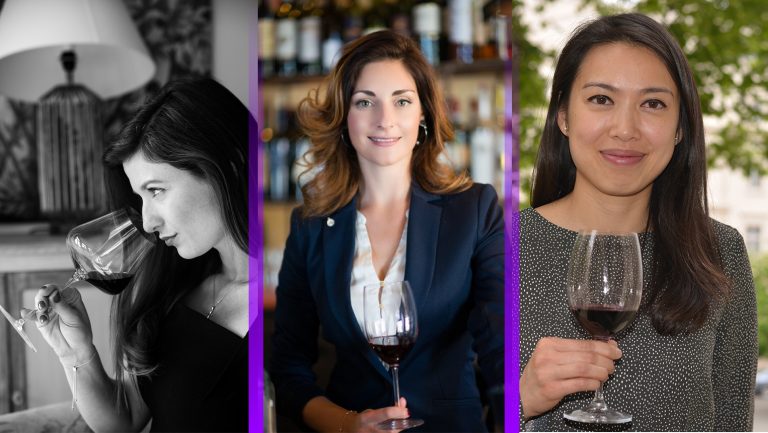
The Ongoing Struggle for Gender Equity
Misogynist attitudes still pervade the wine industry, and in a session focused on the #metoo movement in the wine business, British wine educator and brand ambassador Tatiana Livesey and author and Italian wine ambassador Laura Donadoni discussed the need for women—who buy the majority of wine in the U.S.—to be included and positively recognized in the industry. Invisibility is no longer an option, but neither is Googling women and wine only to turn up a slew of sexually-tinged images, Donadoni stressed.
In a session that explored whether wine is gendered, Regene Lee, national account manager at UK importer and distributor Liberty Wines, unveiled vintage 1970s and ‘80s wine ads, including a particularly provocative cover of Decanter that depicted women as sexual objects. Decades later, gender is now a more fluid concept, but sexuality remains illuminated in wine media and tasting notes, and it needs to be changed. Calling a wine “slutty,” for instance, denigrates the brand—and simultaneously makes the customer uncomfortable. “Our behavior matters, and it will influence the consumer,” she said.
The Danger of Misinformation
The rise of “clean wine” brands like Winc, Scout & Cellar, and Cameron Diaz’s Avaline has been raising eyebrows in the industry, for its overzealous co-opting of such terminology and disparaging of conventional winemaking. A session titled “Wine Meets Wellness: A new demand for transparency in wine. How do you protect your brand from disparagement?” explored this troubling trend. Felicity Carter, editor-in-chief of Meininger’s Wine Business International, delved into the rise of this niche—a passion for the keto diet and clean beauty are among the reasons—and how its momentum is having a very real impact on the wine industry.
Many in this new generation of supposedly “clean” wine brands, which Carter described as “technological products,” suspiciously don’t reveal their origins, but they do spread the myths that conventional wines are full of additives and toxic chemicals. Their fans, wellness fiends who flock to these bottles for their purported purity, believe them. “What’s really dangerous about some of these companies is when they talk about other winemakers they’re talking as though everybody out in the market is using Mega Purple,” she noted. It’s not only dishonest, she added, but it could bring the entire wine market into disrepute, adding that it’s time for wineries to showcase the land where their grapes are grown and their wines’ alcohol and sugar levels.

What Real Digital Savvy Looks Like
In a session titled “Going digital is much more than opening an online wine shop,” food, wine, and travel entrepreneur André Ribeirinho pointed out that 81 percent of consumers go online simply to find out information about a product. “Selling wine online should be the long-term goal, but before that it is important to develop other tools, like building a digital footprint, standing out in a cluttered market, and integrating a human touch.
Liz Thach, MW, distinguished professor of wine and professor of management at Sonoma State University in California, also discussed digital impact through the specific lens of virtual wine tourism, what she described as “virtual visitation to vineyards, wineries, and wine events via digital technologies for the purpose of enjoyment and education.” Even when travel resumes again, she vowed, a combination of winery and vineyard photo and video tours and tastings both large and intimate, can generate the same results as wine tourism, including increased sales, and community partnerships.
With booming online wine sales and shifting consumer expectations, realities, and priorities now the norm, Polly Hammond, founder and managing director of New Zealand-based consultancy 5forests, reiterated that a proper digital strategy is key in a session about wine marketing in a changed landscape. “Master one place, a space where your people are, before scaling up,” she advised. Although it might seem like a good chunk of money, devoting 10 or 12 percent of your annual budget to marketing efforts will result in growth. “Marketing builds a connection and a story and that can be used for good or evil,” Hammond said.

Dispatch
Sign up for our award-winning newsletter
Don’t miss the latest drinks industry news and insights—delivered to your inbox every week.
Alia Akkam is a writer who covers food, drink, travel, and design. She is the author of Behind the Bar: 50 Cocktails from the World’s Most Iconic Hotels (Hardie Grant) and her work has appeared in Architecturaldigest.com, Dwell.com, Penta, Vogue.com, BBC, Playboy, and Taste, among others, and she is a former editor at Edible Queens, Hospitality Design, and Beverage Media. A native New Yorker, Alia now calls Budapest home. Follow Alia @behdria.


